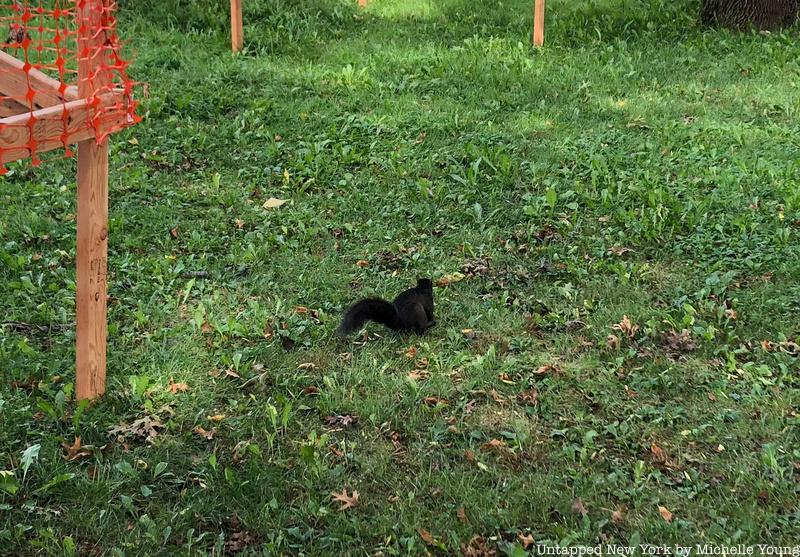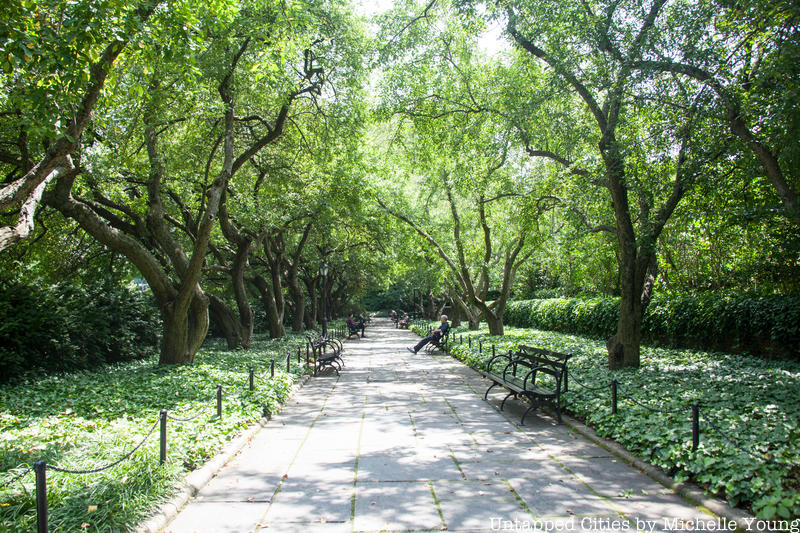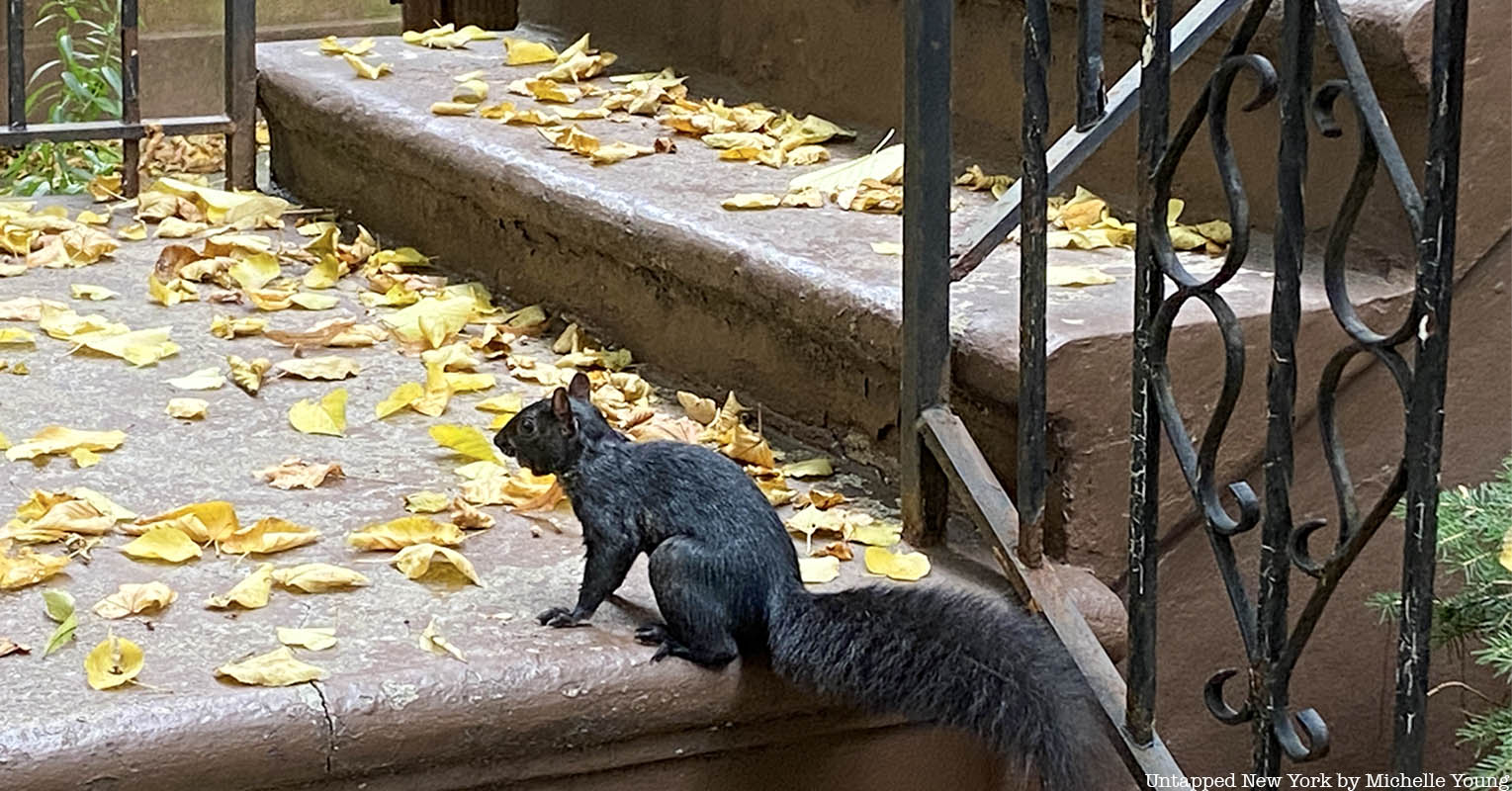Perhaps you’ve come across one of the black squirrels of NYC and wondered where those mutant animals may have come from. We’re here to answer your questions, like are black squirrels more aggressive or meaner than normal ones as the urban legend goes? We’ll also provide some black squirrel facts, like how did they become black? Do they exist outside of New York City?
Squirrels in general are a fixture in New York City, but we’re accustomed to seeing ones with light brown or greyish fur, known as the Eastern Gray squirrel. But the black squirrels are present in all the five boroughs and tend to collect in higher frequency in certain areas where an “island effect” can be created within the urban fabric, like in City Hall Park. You can also find them in larger groups on literal islands, like Roosevelt Island. We’ve also spotted them on Staten Island, on the property of the Alice Austen House. Normally, black squirrels are found in populations at a rate of about 1 in 10,000.

The darker color of the black squirrel is due to a recessive gene that causes abnormal pigmentation. This gene doesn’t usually appear in large populations, so the squirrels tend to be found in areas where the population stays relatively contained. As a curator of the Bronx Zoo told the New York Times in 2001″, ”We’ve created little islands, and Riverside Park is sort of an island, with squirrels living on it. You have populations of related squirrels — smaller populations, so there is a greater chance of uncommon characteristics reoccurring.”
One theory for the presence of the recessive gene is that black fur may keep squirrels warmer. Another theory suggests that the black squirrel was previously the more predominant one, favored because it could camouflage better in forested areas. With the urbanization of New York City, the gray squirrel found it easier to blend in.
The black squirrel is still more of an anomaly here in New York City, but it’s the predominant species in Ontario, Canada and Michigan. Still, New Yorkers are pretty fascinated by their presence. In 1902, the New York Times published a Letter to the Editor from a Brooklyn resident titled “Black Squirrels Not a Freak” in which the reader defended the dark squirrel after the director of a menagerie was quoted saying that the black squirrel was a “freak of nature.” The writer was also a fan of eating black squirrels, stating that he could “bear testimony to the delicious flavor and appetizing aroma of black squirrel pot pie.”

In 1935, another tantalizing article in the New York Times was titled “ZOO IS OUTWITTED BY BLACK SQUIRREL; Frail Black Rodent Upsets a Few Officials in the Bronx Just by Staying Alive.” There had been much hullabaloo over the presence of a black squirrel at the New York Botanical Garden. The garden enlisted the help of Dr. Raymond L. Ditmas of the Zoological Society, who said that the black squirrel was not uncommon but rare enough in the Northeast for people to do a double or triple take. Ditmas believed some black squirrels had been let loose by the Botanical Garden a few years back.
In 1944, an entire article was dedicated to the presence of one white albino squirrel and a black squirrel at the White House in Washington D.C. A sergeant of the White House Police was quoted saying, “The gray ones don’t like this young black fella.” Someone from the Secret Service said, “Maybe Blackie came from the Black Market but I can’t figure out Snow White.” Another person at the White House joked that Snow White didn’t deserve the name unless she came from the “snowy streets of New York.”
As of 1993, black squirrels were growing in number in Connecticut, warranting a news article about it. In 2001, not to be outdone by the black squirrel, squirrels of a different color were talked about in the New York Times article, “For Squirrels, Cinnamon is Now the New Black” about a new hot shade of squirrel.

And in 2018, the first ever squirrel census of Central Park took place with over 300 volunteers canvassing the park after a ceremonial blowing of a conch shell. Using wildlife counting methodology and formula, the group counted 2,373 squirrels. Within that, 103 black squirrels and 392 cinnamon squirrels were counted. That comes out to about 4% population for the black squirrel in Central Park. There was some geographical clustering of the black squirrels, as seen in this map, at the southeast corner near the Pond up to about 67th Street along Fifth Avenue, at Cherry Hill next to the Lake, and around the North Meadow.
The next time you see a squirrel, take a closer look at its color and perhaps you might find a pretty rare black squirrel or a cinnamon one!
Next, read about the secrets of Central Park and 10 of NYC’s most famous animals throughout history!
.






